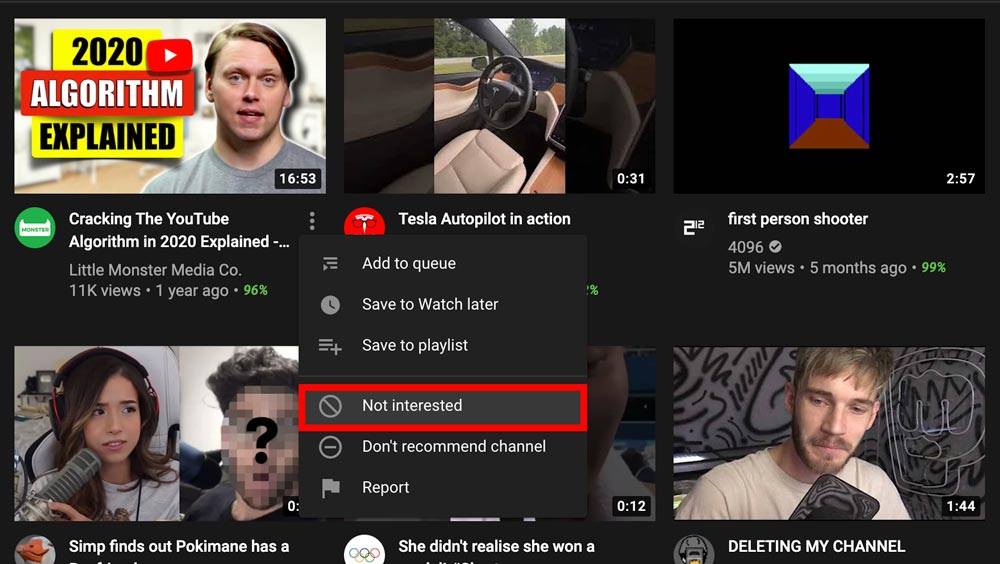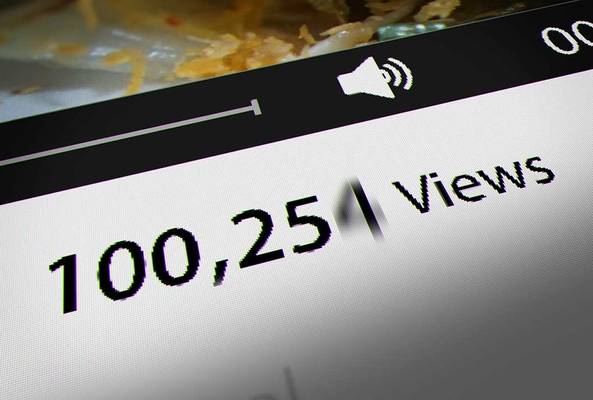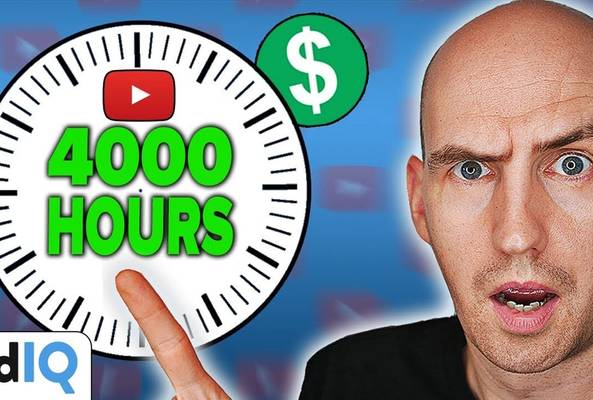Lydia Sweatt is a writer who loves balancing her article/blog time indoors with a healthy dose of nature. She bikes, hikes, and identifies edible plants along the way.
YouTube Algorithm Guide: How Your Videos Are Recommended to Viewers

YouTube just exposed its own algorithm. In a video posted to Creator Insider, YouTube product manager Rachel Alves discussed how the video recommendation system works. She explained how videos get discovered, whether that’s on the YouTube homepage or suggested content areas. Then she offered tips to make click-worthy videos for those places.
Unlock Your Channel's Potential
This is valuable information for creators, and yet, it’s not life-changing advice to help you go viral. It’s good to understand how the system works. But if that’s your only focus, growing on YouTube will be the same challenge its always been.
Read More: How to Start a YouTube Channel – 10 Brilliant Tips
The real focus should be your audience, not an algorithm. Viewers are the heart of the system, and the machinery is there to support their intent.
“YouTube’s recommendation system is designed to find videos for viewers, not viewers for videos,” Alves says.
Above all, that statement is what Alves wants you to grasp. In the video below, each secret about the algorithm comes with a caveat: Study your audience.
Want to learn how YouTube recommends videos? Just keep reading. You can use the secrets below plus audience data to make better content.
How YouTube Recommends Your Videos to Viewers
The YouTube algorithm has two goals when recommending videos:
- Helping viewers find videos they want to watch
- Maximizing viewer satisfaction
Overall, YouTube wants people to return to the platform because they enjoyed being there. But finding the best way to do that took years of testing and correcting.
In the past, clicks and views were supreme. YouTube recommended popular videos to viewers, even if they included clickbait titles and thumbnails. Around 2011, viewers shared their feedback, and it wasn’t positive. Users didn’t want sensationalized or misleading content on their homepages.
To fix this, YouTube started prioritizing Watch Time in 2012. In theory, how long someone watches a video should reveal how much they enjoyed it. But like clicks and views, Watch Time wasn’t a perfect metric. Just because someone watches a 15-minute video about dog training, that doesn’t mean they enjoyed the experience. There could be other reasons they watched until the end. Maybe their puppy destroyed three couch pillows, and the owner desperately needed to correct the behavior.
“I’m sure you’ve all spent time bingeing through a series that you watched hours of but you still didn’t feel that good afterward,” Alves says. “What we wanted to identify is how do we define quality or valued Watch Time.”
Eventually, YouTube decided that satisfaction indicates the value of a video. Instead of prioritizing how long someone watched, the better question to ask was, did they enjoy it? Would they do it again?
How YouTube Measures Viewer Satisfaction, the Catalyst for Video Recommendations
From 2015 to now, YouTube has prioritized viewer satisfaction. It’s also placed an emphasis on promoting responsible content, which helps viewers fulfill their search intent. If you’re looking for ways to fight hyperpigmentation, for example, it’s best to learn from an authoritative source on YouTube – perhaps an esthetician or a dermatologist.
YouTube does three things to discover and promote satisfying, responsible content:
- Ask viewers what they like (via surveys) and optimize for those things.
- Promote authoritative content.
- Reduce violative content.
YouTube Surveys
YouTube trains its prediction models using surveys – millions of them. Even with a large number of surveys going out, viewers aren’t inundated with feedback requests. Alves says they may receive one or two surveys each month. The surveys ask for video ratings and why the viewer enjoyed the video. They’re able to select words such as “informative,” “life-changing,” “inspiring,” and more. The goal is to gauge which videos are truly satisfying and not just highly watchable.
“We no longer consider all Watch Time on YouTube to be equal,” Alves says. “We really focus on satisfaction. Surveys are one of the most important pieces of data we use to train this.”
This data isn’t available to creators yet, but Alves says YouTube is working on it.
Likes, Dislikes, Shares, and Not Interested Signals
When someone likes your video, that tells YouTube your content is satisfying. The same logic is applied to video shares. Additionally, YouTube is paying attention to interest level, or how often viewers say they’re “not interested” in a video.

Now that you know likes and dislikes serve a purpose on YouTube, always aim to please. And be sure to download vidIQ to see the percentage of likes and dislikes on every video. These percentages are green when videos have lots of likes and red when there are more dislikes. Going forward, you can do an audit of your channel and see which videos are producing more likes than dislikes. Videos in the dislike category may reveal what you can tweak in your content strategy.

How YouTube Ranks Videos
For most channels, Alves says the YouTube homepage and suggested content areas are top traffic sources. The homepage recommends videos based on a user’s watch history. Suggested content appears alongside a video someone is currently watching.
No matter how hard you try, there’s nothing you can do, statistically, to influence these traffic areas.
“A lot of creators ask, ‘How do I optimize my content so I get more views from the homepage or suggested videos,’ ” Alves says. “The difficult answer is you can’t. You can’t optimize for a traffic source. You can only optimize for people or viewers.”
Ranking Videos on a Viewer’s Homepage
YouTube uses two categories to rank homepage videos. The first is video performance. Some of those metrics include:
- Click-through rate
- Average view duration
- Various satisfaction signals
- And many more factors
All of this has to do with how videos perform on homepages. Before making a recommendation, YouTube wants to know if people watched those videos, selected “not interested” or performed other actions.
Personalization is the second category. YouTube pays attention to viewers’ watch history, including how often they watch videos from certain channels.
3 Ways to Make Your Videos Stand Out on the YouTube Homepage
- Create better thumbnails. Make them eye-catching but easy to understand in less than a second. Remember, the homepage is where many viewers discover content for the first time. Using a colorful graphic with minimal text is a good way to catch their attention.
- Have a good title. This mostly comes down to keyword research. Knowing the “language” of your audience will help you use terms and phrases they’re already searching for on YouTube.
- Be consistent. Humans love routines. You can train your viewers to expect weekly videos by sticking to a schedule. Subconsciously, that may inspire them to click on your videos when they appear on the homepage.
Read More: How to Make Custom Thumbnails – The Essential Guide!
Do you need help making better thumbnails? vidIQ’s thumbnail preview tool will reveal how your graphics look against those from other creators. You can type in a keyword and see which style(s) channels are using for any topic. Then you’ll know exactly what to do to make yours stand out.

Download vidIQ for free to start using this tool. Then read our guide about how to use the thumbnail preview tool.
Ranking Content For the ‘Suggested Videos’ System
YouTube suggests videos to viewers based on two things:
- What they’ve already watched
- What they’re likely to watch next
Sometimes it goes even the deeper than that. Videos that are watched one after the other, as well as topically-related content, are fair game.
4 Tips to Make Your Content Suggestion-Worthy
- Build a series of videos around certain topics. This gives YouTube more content to suggest as people watch videos of the same topic.
- Don’t let people leave your content domain. Use playlists and end-screens to keep them in a loop, constantly displaying your channel’s best content.
- Ask people to watch more content. It sounds simple, but you get what you ask for. Make the verbal request and see how many viewers oblige.
- Use a consistent thumbnail style. Strong branding helps a viewer remember you and your content. People should be able to identify your videos in a suggested content list.
How to Make Videos That Satisfy Your Audience
With YouTube tracking viewer satisfaction, that means one thing for you and your content: You can’t just make informative videos and expect to get more views. They have to be enjoyable too, or YouTube won’t recommend them.
But how do you make a satisfying video?
You can start by copying what YouTube is doing. You can ask your audience how they feel about your videos and encourage them to leave comments. Maybe you're testing a new filming background or a different teaching method on YouTube. To know if your videos are truly enjoyable, get some feedback.
There are lots of little ways to make satisfying videos too. You should always:
- Let your personality shine through. Be witty, relaxed, friendly – whichever represents you.
- Use visual aids to help viewers understand your message.
- Use video chapters so people can reference a video later.
- Be relatable by showing your vulnerabilities.
Having YouTube recommend your videos to viewers is a gift. But are you ready for the next step? Once you have new viewers on your channel, learn how to make them return.
Ready to Grow Your YouTube Channel?





